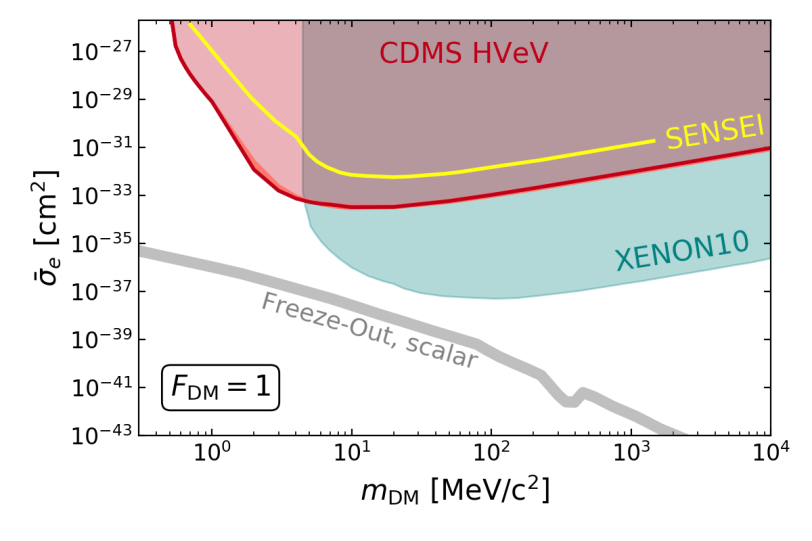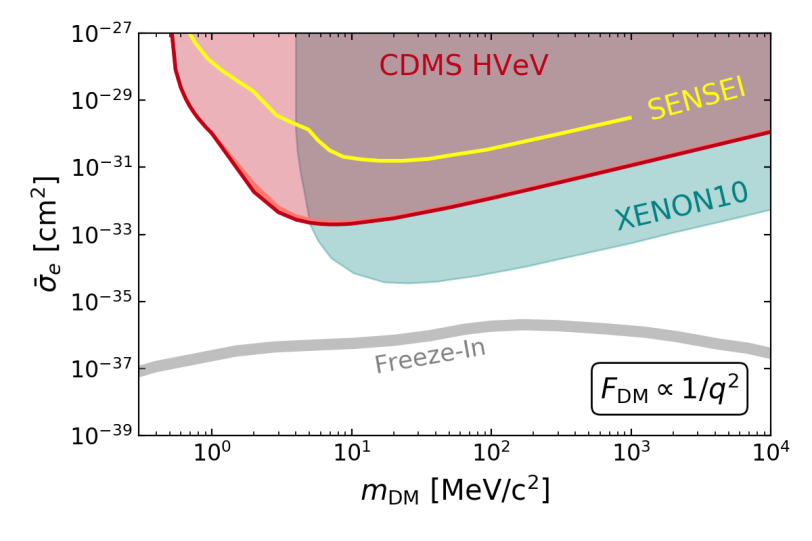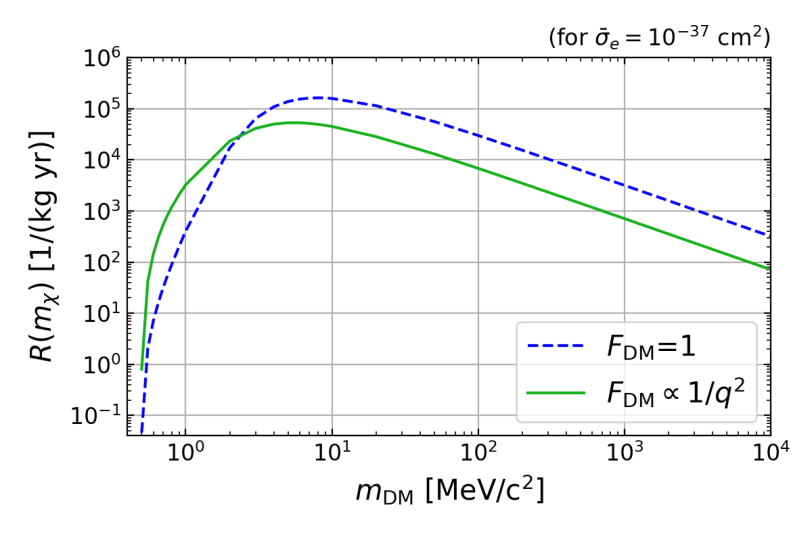HVeV Run1: Updated DM-Electron Scattering Cross Section Limits
This Public Documentation presents results on light Dark Matter (DM) - electron scattering searches after a correction to the DM signal model had been applied. These results are published in PhysRevLett.121.051301 , and the erratum, PhysRevLett.122.069901 .
All results assume a relic DM density of ρDM = 0.3 GeV/cm3. All limits are at 90% confidence level. σ e is the DM-electron scattering cross section. FDM is the DM form factor where FDM = 1 (FDM ∝ 1/q2) corresponds to a DM model with a heavy (ultra light) dark photon mediator. q is the momentum transfer. mDM is the DM mass. More detailed information on the assumed DM models and astrophysical parameters can be found in the US Cosmic Visions Community Report.
Result
Topic
Last Updated
Comments/Download

Exclusion Limit
Nov 7, 2018
Paper, Figure 1 top.
DM-electron scattering cross section limit assuming a heavy dark photon mediator. The SuperCDMS HVeV Run1 limit is the red line, which assumes a Fano factor of 0.155 in the ionization model and the salmon band results from the variation of the Fano factor (1 and 1e-4). The ionization model is used to convert the continuous electron recoil spectra in units of eV (calculated with QEdark) into quantized electron recoil spectra in units of e/h pairs as described in Eq. 2 of the original HVeV R1 paper. The XENON10 and SENSEI limits have been scaled with a factor 0.4/0.3 to agree with our assumption of 0.3 GeV/cm3 dark matter density.

Exclusion Limit
Nov 7, 2018
Paper, Figure 1 bottom.
DM-electron scattering cross section limit assuming an ultra light dark photon mediator. The SuperCDMS HVeV Run1 limit is the red line, which assumes a Fano factor of 0.155 in the ionization model and the salmon band results from the variation of the Fano factor (1 and 1e-4). The ionization model is used to convert the continuous electron recoil spectra in units of eV (calculated with QEdark) into quantized electron recoil spectra in units of e/h pairs as described in Eq. 2 of the original HVeV R1 paper. The XENON10 and SENSEI limits have been scaled with a factor 0.4/0.3 to agree with our assumption of 0.3 GeV/cm3 dark matter density.

Dark Matter Signal Rate
Nov 7, 2018
Paper, Figure 2.
Total DM - electron scattering rates over DM mass expected in silicon at a fixed DM-electron scattering cross section and for two different DM form factors. The underlying electron recoil energy spectra are computed with the publicly-available QEdark tools for electron recoil energies ranging from 0 eV - 50 eV. Any contribution from energies above 50 eV is negligible. The total rates consider the entire energy region provided by QEdark. The March spectra are used to represent the yearly average of the electron recoil spectra. The SuperCDMS HVeV Run1 Region of Interest ranges from 0.7 e/h pairs - 10 e/h pairs, or in units of energy from about 1 eV to about 38 eV (see the ionization model in Eq. 2 of the original HVeV R1 paper).
